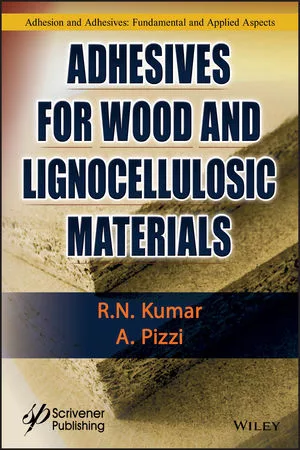Associative Thickeners for Viscosity Retention upon Tinting
Associative thickeners are polymers that are based on water-soluble polymers. These can be acrylate polymers, cellulose ethers or, for the top-quality nonionic products, polyethyleneglycol. These are capped with water-insoluble hydrophobic groups like fatty alcohols, for example. In water solution or in emulsion, these polymers form a network that increases the viscosity. The water-soluble backbone polymer is dissolved in water. The hydrophobic caps are adsorbed onto the hydrophobic emulsion polymer particles, or they form micelle structures with hydrophobes from other polymers. As each associative thickener polymer contains at least two hydrophobic caps, the result is a three-dimensional network within the emulsion. This increases the viscosity. Mainly the high- and mid-shear viscosity are affected. Therefore, it improves antispatter and brush drag more than all other thickeners. (Figure 1)
Aminoplast Associative Thickeners
For premium-class associative thickeners based on polyethyleneglycol, the hydrophobic caps are in most cases linked to the polyethyleneglycol by reaction with a diisocyanate to form a polyurethane. The products are therefore polyurethane thickeners, often called HEUR (hydrophobically modified ethoxylated urethane thickener) or just PU-thickeners. In our case, the link is done by use of an aminoplast instead of a diisocyanate. This forms a new and improved class of associative thickeners with outstanding advantages that we call HEAT (hydrophobically modified ethoxylated aminoplast thickener). (Figure 2)
The aminoplast linkage is, in most cases, more hydrophilic and more water soluble than diurethane groups. This is obvious, as all aminoplast polymers are water-clear solutions, compared to turbid PU-thickener solutions. The reaction to form the polymer is an endothermic equilibrium reaction and a condensation reaction. This allows much better control of the reaction and allows quick changes in the polymer composition. The diisocyanate reaction is a nonequilibrium exothermic addition reaction. This is harder to control. Changes in polymer composition are more difficult to handle. Urethane chemistry is therefore less flexible.
The use of special aminoplasts allows an easy way to change the amount of hydrophobic caps. Aminoplast connecting molecules are used, which have four reactive groups. These four functional groups do not all react immediately, but two of the groups do react rather quickly. Mainly, linear polymers are formed with polyethylene glycol. At stronger reaction conditions, a third functional group can be forced to react, and, maybe partly even the fourth group. So at first, mainly linear polymers are achieved with two hydrophobic caps placed mainly on both ends of the polymer. At this point, there is no strong difference compared to existing PU-thickeners. But in this case, by adding more hydrophobic alcohols and adjusting the reaction conditions, the polymer can be forced to add some more hydrophobic parts at the end or even in the middle of the polymeric backbone. Thus, rather large amounts of hydrophobe can be added to the polymer backbone without any change to its major backbone composition. The ability to add very high levels of hydrophobe is a special property of aminoplast chemistry and it allows the production of associative thickeners that resist viscosity loss upon the addition of glycols or surfactants to paints, as happens during tinting of paints with concentrated colorants.
Tinting Stability
A main disadvantage of associative thickeners has been the strong influence of other ingredients and paint additives towards their thickening capability. It has been known since the introduction of associative thickeners that their thickening efficiency is strongly reduced when solvents like glycols or surfactants are added to paint. This has strongly limited their use so far. The solvents or surfactants have hydrophobic parts. These interfere with the hydrophobic caps of the associative thickeners and hinder them from forming a full three-dimensional network. Hydrophobes are desorbed from emulsion particle surfaces by more hydrophobic parts of these molecules or micelle structures are weakened. As in most cases, the chemical composition of all additives is not known to the formulator of a paint, therefore, there is always a strong potential source of problems that may arise when additives are added or exchanged. In general, this always happens when a base paint is tinted with pigments by addition of a colorant. The colorants are concentrates of pigments that contain a large amount of wetting agents and glycols to keep the pigments stable in the system and keep the viscosity low. Glycols are used to improve the wetting out of these colorants and to make them compatible in a variety of different systems, even in solventborne systems. (Figure 3)
Experimental
As mentioned above, aminoplast technology allows the addition of more hydrophobes onto the polymer backbone. Trials were made with different amounts of hydrophobe, without changing the amount and ratio of the polyethyleneglycol and aminoplast linkage group. Polymers were synthesized with 4%, 6% and 8% hydrophobe. In case the identical polyethyleneglycol and fatty alcohol are used and diisocyanate is the linking group instead of the aminoplast, then the maximum amount of hydrophobe that can be linked to the polymer backbone would be only approximately 5.5 %. This level assumes that the terminal isocyanates become part of the hydrophobe. For comparison purposes, we used competitive isocyanate-derived associative thickeners, which we assume to have rather high amounts of hydrophobe in the molecule. This is concluded from their pseudoplastic thickening, which is typical for high amounts of hydrophobe in the polymer. (Figure 4)
The test systems were either simple latex test formulations or complete satin paint formulations. The latex tests were formulated as follows:
- 100 parts emulsion
30 parts deionized water
0.3 parts defoamer (ADDID 800, Wacker-Chemie)
2 parts associative thickener containing 20% active solids
To test the influence of solvents and wetting agents, typical glycols like propyleneglycol and butyldiglycol were added to the latex formulation to check its influence on viscosity reduction. A typical, non-ionic surfactant, dodecanolethoxylate (6EO), was added as a wetting agent. The colorants used were commercially available grades (Luconyl, BASF). Both the standard version containing glycols and the newer, VOC-free versions were tested.
Results
The addition of glycols or non-ionic surfactants gave the expected results. For the aminoplast associative thickener with low amounts of hydrophobe and for the comparable polyurethane thickener, a strong reduction of viscosity could be observed. The addition of more hydrophobe (up to 8%) onto the aminoplast associative thickener yields a product with much better resistance to viscosity drop. It was obvious that the viscosity drop is reduced as the hydrophobe content increases. (Figure 5)
This was also repeated with commercially available colorants. The results were similar. The aminoplast associative thickener with 8% hydrophobe was, in all cases, more stable towards solvent and surfactant influence. (Figures 6-9)
To confirm the findings in a full paint formulation, a satin gloss paint (see Table) was prepared, and commercially available colorants were added. Also here, the aminoplast associative thickener with 8% hydrophobe shows much less viscosity drop upon tinting with colorants. (Figure 10)
Discussion
Why do aminoplast associative thickeners with high levels of hydrophobe show a more stable viscosity when tinted? The proposed mechanism is rather simple. First is the use of special, strong hydrophobes, which resist the desorption from emulsion particles and micelles by other hydrophobic ingredients. But secondly, and most important, are the additional hydrophobes, which are placed on the backbone of the polymer. These create intramolecular interactions that prevent the complete unfolding of the polymer. When colorants are added, the included hydrophobic ingredients disrupt those intramolecular interactions. This unfolds the polymer more completely and offsets the normal loss of viscosity caused by the disruption of hydrophobic interactions.
Summary
Existing associative thickeners show a typical reduction of viscosity when solvent or surfactant containing colorants are added to the paint. With the new chemical family of aminoplast-based associative thickeners, it is possible to overcome this problem. This new aminoplast chemistry -- Optiflo TVS -- allows the easy addition of more hydrophobe to the thickener polymers. These new associative thickener polymers with high hydrophobe content show a significant increase in viscosity stability when paint is tinted with colorants. c
Optiflo TVS is available from S¿d-Chemie. For more information, contact Klaus Dziwok, Ph.D., S¿d-Chemie Ag, at klaus.dziwok@sud-chemie.com.
This paper was presented at the 7th Nurnberg Congress, European Coatings Show, April 2003, Nurnberg, Germany.
Looking for a reprint of this article?
From high-res PDFs to custom plaques, order your copy today!






